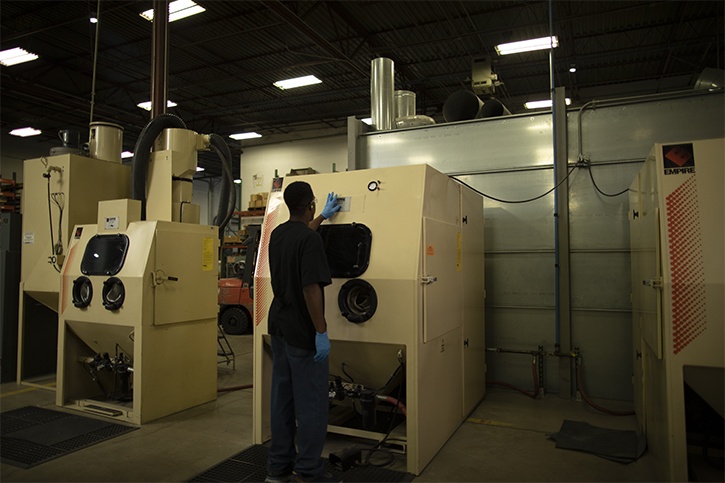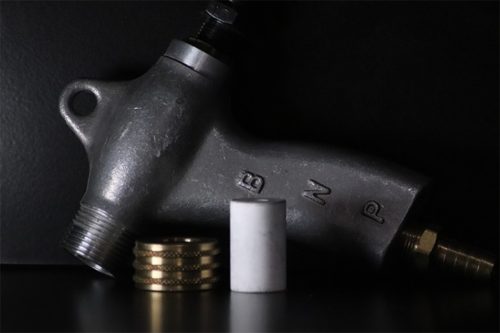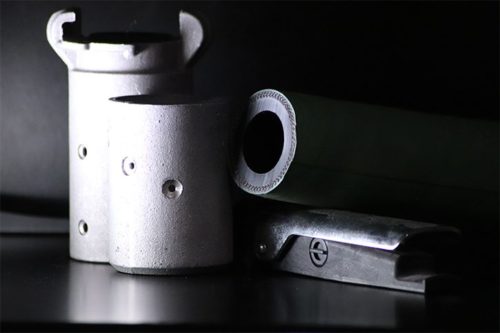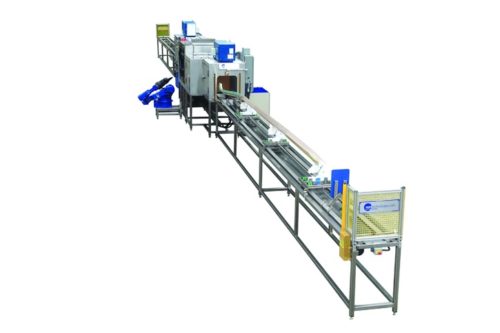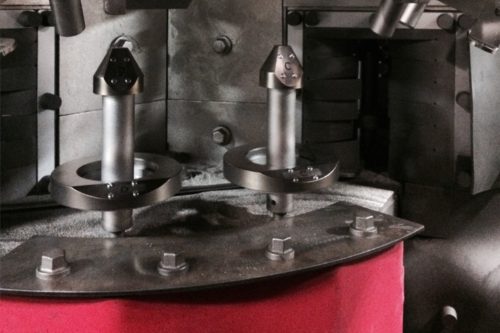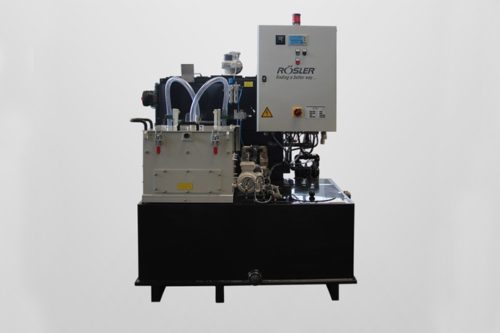A large majority of dust collection systems are for abrasive blasting applications. Dust collection systems can be integrated into your surface enhancement process to provide recovery, reclamation, and cleaning of abrasive media for re-use.
In air blast systems, the dust collection system is sized to provide the proper CFM and static to recover and separate reusable media from the dust and debris, but not pull over good media. Blast rooms utilize dust collection to provide airflow to clear out the work area and contain the dust.
In wheel blast equipment, dust collection is used to pull debris and dust from the air wash system.
Dust collectors are equipped with filter-cleaning mechanisms. Most will utilize an air-pulse mechanism to free build-up and restore airflow. The air-pulse cleaning can be manual or automatic. In the past many collectors used filter bags, but the majority have transitioned to higher-efficiency cartridge filters to comply with clean air regulations.
Small collectors come equipped with a clean-out drawer or a small drum to capture dust and debris. Applications that generate a higher volume of dust may require additional equipment that can dump waste into 55-gallon drums or super sacks.
There are options to prevent damage from the ignition of combustible dust. Spark arrestors help extinguish a spark as it travels through the ductwork or explosion vents will direct a blast away from personnel and equipment. Wet dust collectors are also available to reduce the potential for damage from combustible dust.
Other Types of Dust Collection Systems Available:
- Sanding and Grinding Booths
- Downdraft Tables
- Wet Downdraft Tables
- Portable Vacuum Systems
- Fume Collectors
- Mist Collectors
- Paint and Powder Booths



